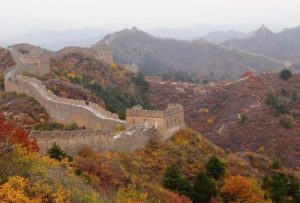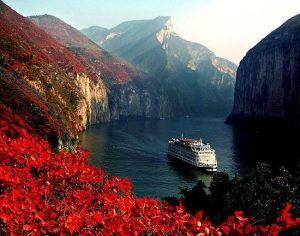 The Yangtze River gathers thousands of rivers in her process of more than 6,300 kilometers, crosses the deep mountain valleys, and plunges into the East China Sea. When she passed through the Sichuan Basin and accepted several major tributaries of the Minjiang River, Jialing River and Wujiang River, the amount of water suddenly increased, and the unstoppable momentum opened up the mountains, forming the world-famous Three Gorges.
The Yangtze River gathers thousands of rivers in her process of more than 6,300 kilometers, crosses the deep mountain valleys, and plunges into the East China Sea. When she passed through the Sichuan Basin and accepted several major tributaries of the Minjiang River, Jialing River and Wujiang River, the amount of water suddenly increased, and the unstoppable momentum opened up the mountains, forming the world-famous Three Gorges.
The Three Gorges of the Yangtze River, from Baidi City in Fengjie County, Chongqing in the west, to Nanjin Pass in Yichang City, Hubei Province, consists of Qutang Gorge, Wu Gorge and Xiling Gorge, with a total length of 193 kilometers, including 8 km long in Qutang Gorge and 44 km in Wu Gorge and 76 kilometers long in Xiling Gorge. The remaining 65 kilometers are two sections of the hilly valley connecting the three gorges.
Qutang Gorge is also known as the Kui Gorge. It starts from Fengjie Baidi City in the west and Wushan Daixi in the east. It is famous for being powerful in the Three Gorges. Guo Moruo has a poem: “If the scenery is different, the Qutang Gorge is the leader in Three Gorges.” On the north and south sides of the Kuimen in the gorge narrow, there are thousands of cliffs, such as knives and axe cuts. The river flows in a narrow river course with a width of only 100 meters. It shows a spectacular scene of “the waters will be tens of thousands, and Qutang Gorge will compete for one”. Down the river, the water rapidly flows, when the boat flows over there, tourists will feel it amazing.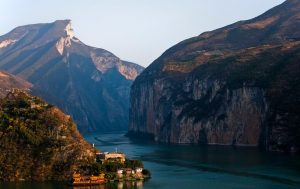
On the cliff of the North Shore, there is a man-made ruin of the ancient plank road. On the top it is the cliff, and the foot is a turbulent river. This is the only way for the ancient boatman, military transportation and merchants. Next to the plank road is a seven-door deep hole with a depth of more than 100 meters. Between the cliff rocks, there is the window facing the river. Looking up at the skylight, the twin peaks are inserted into the clouds, and the blue sky is on the line. Looking down, the river is running and the boat is like an arrow. When you enter into the hole, the stalactites stand like a bird and beast, which are very vivid.
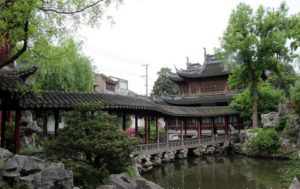 Yu Garden is located in the northeast of Shanghai’s old city, with Fuyou Road in the north, Anren Street in the east, and Shanghai Old Town Temple in the southwest. It is a classical garden in the south of the Yangtze River. It was built in the Jiajing years of the Ming Dynasty in 1590s and covers an area of more than 30 acres. In the garden, there are the three famous stones in the south of the Yangtze River: The Jade Linglong, the command post of the 1853 Small Knife Uprising, and the tourist attractions such as the Chenghuang Temple and the shopping street. Yu Garden was opened to the public in 1961 and was listed as a national key cultural relics protection unit by the State Council in 1982.
Yu Garden is located in the northeast of Shanghai’s old city, with Fuyou Road in the north, Anren Street in the east, and Shanghai Old Town Temple in the southwest. It is a classical garden in the south of the Yangtze River. It was built in the Jiajing years of the Ming Dynasty in 1590s and covers an area of more than 30 acres. In the garden, there are the three famous stones in the south of the Yangtze River: The Jade Linglong, the command post of the 1853 Small Knife Uprising, and the tourist attractions such as the Chenghuang Temple and the shopping street. Yu Garden was opened to the public in 1961 and was listed as a national key cultural relics protection unit by the State Council in 1982.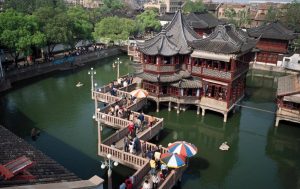
 The Potala Palace is a palace, not a temple. It is politically similar to the Forbidden City and is the political center of the Tibetan region in history, not a Buddhist center. The building is divided into three parts: Snow City, White Palace and Red Palace. At this stage, there are only the East Side White Palace and some of the main halls on the east side of the Red Palace open for visiting. The west side has never been open to visitors. The tour route of The Potala Palace is very fixed. There is no turning way back. After the tour, you will leave from the mountain in the back. Here are a few things to keep in mind:
The Potala Palace is a palace, not a temple. It is politically similar to the Forbidden City and is the political center of the Tibetan region in history, not a Buddhist center. The building is divided into three parts: Snow City, White Palace and Red Palace. At this stage, there are only the East Side White Palace and some of the main halls on the east side of the Red Palace open for visiting. The west side has never been open to visitors. The tour route of The Potala Palace is very fixed. There is no turning way back. After the tour, you will leave from the mountain in the back. Here are a few things to keep in mind:
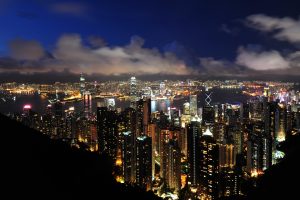 The Victoria Peak is one of the must-see attractions for your travel to Hong Kong, and the mode of transportation to go there is by Central MTR Station (No. 5), take the No. 15 double-decker bus.
The Victoria Peak is one of the must-see attractions for your travel to Hong Kong, and the mode of transportation to go there is by Central MTR Station (No. 5), take the No. 15 double-decker bus.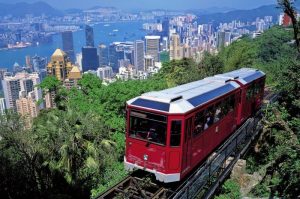
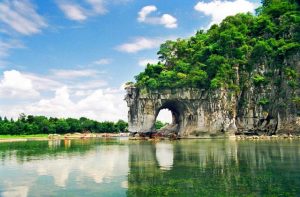 At night, the Elephant Trunk Hill is dressed with colorful costumes. Under the background of the fisherman’s lights, a legend of Elephant Trunk Hill is staged, and if the slightly higher fare of this attraction is ignored, the night view of Elephant Trunk Hill is one of the best in the night view of Guilin.
At night, the Elephant Trunk Hill is dressed with colorful costumes. Under the background of the fisherman’s lights, a legend of Elephant Trunk Hill is staged, and if the slightly higher fare of this attraction is ignored, the night view of Elephant Trunk Hill is one of the best in the night view of Guilin. Generally speaking, everyone goes to Xiangshan Park to take a picture of the elephant’s nose. However, as a park that is squandered by locals and tourists, Xiangshan Park’s ticket price has so far stood up, and the official website has a price of 70 Yuan for it. If you plan to shoot the elephant’s nose, go directly to the 2nd entrance and exit after entering the park, the elephant trunk is there, don’t climb the mountain, because there is nothing on the mountain. Although basically everyone understands that there is no such thing in the park, it does not stop the obsession of tourists.
Generally speaking, everyone goes to Xiangshan Park to take a picture of the elephant’s nose. However, as a park that is squandered by locals and tourists, Xiangshan Park’s ticket price has so far stood up, and the official website has a price of 70 Yuan for it. If you plan to shoot the elephant’s nose, go directly to the 2nd entrance and exit after entering the park, the elephant trunk is there, don’t climb the mountain, because there is nothing on the mountain. Although basically everyone understands that there is no such thing in the park, it does not stop the obsession of tourists.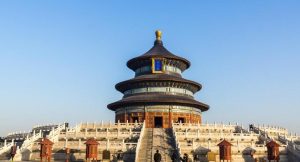 The Temple of Heaven is a special altar for the Emperor of the Ming and Qing Dynasties to worship the heavens, ask for rain and pray for the harvest. The north of the altar is round and the south is square, meaning ” round heaven and square earth.” It is divided into two parts: the inner altar and the outer altar. The northern part of the inner altar is the “altar praying for grain”. It is the place where the emperor held the grain praying Grand Ceremony in the spring, mainly including the Hall of Prayer for Good Harvests and the Emperor Hall. In the south, it is Circular Mound Altar, and it is the place where the emperor worships the heavens on the winter solstice. It mainly includes the Circular Mound Altar, the Imperial Heavenly Vault and god kitchen and the temple and the animal sacrificial pavilion.
The Temple of Heaven is a special altar for the Emperor of the Ming and Qing Dynasties to worship the heavens, ask for rain and pray for the harvest. The north of the altar is round and the south is square, meaning ” round heaven and square earth.” It is divided into two parts: the inner altar and the outer altar. The northern part of the inner altar is the “altar praying for grain”. It is the place where the emperor held the grain praying Grand Ceremony in the spring, mainly including the Hall of Prayer for Good Harvests and the Emperor Hall. In the south, it is Circular Mound Altar, and it is the place where the emperor worships the heavens on the winter solstice. It mainly includes the Circular Mound Altar, the Imperial Heavenly Vault and god kitchen and the temple and the animal sacrificial pavilion.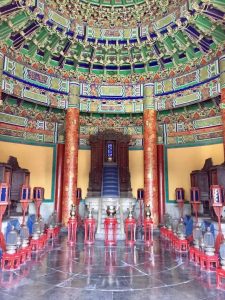
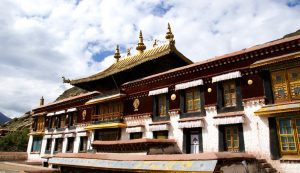 Sera Monastery, Drepung Monastery and Ganden Monastery are the three major temples in Lhasa. It was the last of the three temples to be built. There is the most famous debate ceremony in Tibetan areas. The debate was held in the northernmost debate hall in the temple. There are so many people watching the debate, and they can take a good position when coming there early.
Sera Monastery, Drepung Monastery and Ganden Monastery are the three major temples in Lhasa. It was the last of the three temples to be built. There is the most famous debate ceremony in Tibetan areas. The debate was held in the northernmost debate hall in the temple. There are so many people watching the debate, and they can take a good position when coming there early.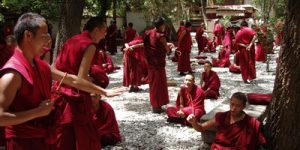 Dozens of lamas standing there, are divided into one-to-one, one-to-many, or many-to-one combinations, questioning, rebutting, refuting and then answering, using a variety of gestures, physical movements, or hands waving rosary beads, one-legged independence, even glaring at each other, vigorously claping to make a strong voice. The debate, for the monks is a practice, for tourists is like watching a lively performance.
Dozens of lamas standing there, are divided into one-to-one, one-to-many, or many-to-one combinations, questioning, rebutting, refuting and then answering, using a variety of gestures, physical movements, or hands waving rosary beads, one-legged independence, even glaring at each other, vigorously claping to make a strong voice. The debate, for the monks is a practice, for tourists is like watching a lively performance.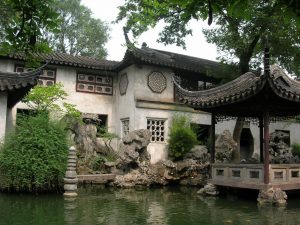 The Lingering Garden is located at No. 338, Liuyuan Road, Tumen, Suzhou. It is well-known for its exquisite architectural layout and numerous strange stones. It is also known as the Four Famous Gardens of China together with Suzhou Humble Administrator’s Garden, Beijing Summer Palace and Chengde Mountain Resort. The Lingering Garden is a large-scale classical private garden in China. It covers an area of 23,300 square meters and represents the Qing Dynasty style. The garden is famous for its exquisite architectural style. The hall is magnificent and the courtyard is full of changes. Taihu Stone is the most famous with Guanyun Peak. The architectural space is exquisitely processed, and the gardeners use various artistic techniques to form the Garden space system which is featuring the special rhythmic, and it has become an example of the world-famous architectural space art processing. The Lingering Garden is divided into four parts, the east is mainly featuring architecture, the middle is the landscape garden, the west is a large rockery between the earth and stone, and the north is the idyllic scenery.
The Lingering Garden is located at No. 338, Liuyuan Road, Tumen, Suzhou. It is well-known for its exquisite architectural layout and numerous strange stones. It is also known as the Four Famous Gardens of China together with Suzhou Humble Administrator’s Garden, Beijing Summer Palace and Chengde Mountain Resort. The Lingering Garden is a large-scale classical private garden in China. It covers an area of 23,300 square meters and represents the Qing Dynasty style. The garden is famous for its exquisite architectural style. The hall is magnificent and the courtyard is full of changes. Taihu Stone is the most famous with Guanyun Peak. The architectural space is exquisitely processed, and the gardeners use various artistic techniques to form the Garden space system which is featuring the special rhythmic, and it has become an example of the world-famous architectural space art processing. The Lingering Garden is divided into four parts, the east is mainly featuring architecture, the middle is the landscape garden, the west is a large rockery between the earth and stone, and the north is the idyllic scenery.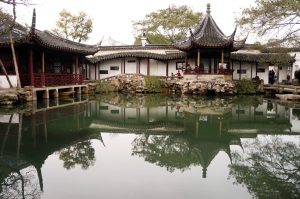 Through the ivy on the wall, the raining tiles, the bamboo forest and the doors and windows, you can suddenly feel a weak connection with the times, as if you can feel the people living in the yard at that time. Feel the temperament of that era, their aesthetic philosophy of their life.
Through the ivy on the wall, the raining tiles, the bamboo forest and the doors and windows, you can suddenly feel a weak connection with the times, as if you can feel the people living in the yard at that time. Feel the temperament of that era, their aesthetic philosophy of their life. The West Lake is surrounded by mountains on three sides, covering an area of 6.39 square kilometers, about 2.8 kilometers wide from east to west, 3.2 kilometers long from north to south, and it is nearly 15 kilometers around the lake. The lake is separated by Gushan, Bai Causeway, Su Causeway and Yanggong Causeway. According to the size of the area, there are five water faces, namely, West Lake, Xili Lake, Beili Lake, Small South Lake and Yue Lake. Su Causeway and Bai Causeway cross the lake, The three small islands of Small yingzhou, Mid-Lake Pavilion and Ruan Gong Islet stand in the heart of the outside West Lake. The Leifeng Pagoda in Xizhao Mountain and the Baochu Pagoda in the Gem Mountain are separated by the lake, thus forming the basic pattern of “One Mountain, Two Towers, Three Islands, Three Causeways and Five Lakes”.
The West Lake is surrounded by mountains on three sides, covering an area of 6.39 square kilometers, about 2.8 kilometers wide from east to west, 3.2 kilometers long from north to south, and it is nearly 15 kilometers around the lake. The lake is separated by Gushan, Bai Causeway, Su Causeway and Yanggong Causeway. According to the size of the area, there are five water faces, namely, West Lake, Xili Lake, Beili Lake, Small South Lake and Yue Lake. Su Causeway and Bai Causeway cross the lake, The three small islands of Small yingzhou, Mid-Lake Pavilion and Ruan Gong Islet stand in the heart of the outside West Lake. The Leifeng Pagoda in Xizhao Mountain and the Baochu Pagoda in the Gem Mountain are separated by the lake, thus forming the basic pattern of “One Mountain, Two Towers, Three Islands, Three Causeways and Five Lakes”.
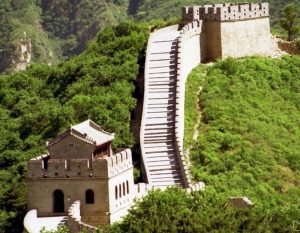 When you are to take a trip to the Great Wall, it will be better to choose the best time such as the earlier Autumn if your time is flexible, as when you visit there on October, you will feel it very cold.
When you are to take a trip to the Great Wall, it will be better to choose the best time such as the earlier Autumn if your time is flexible, as when you visit there on October, you will feel it very cold.